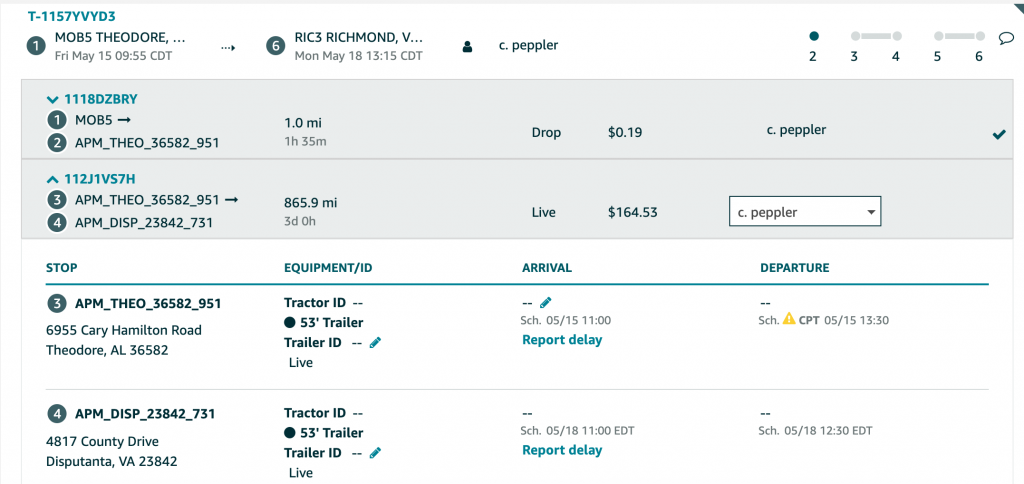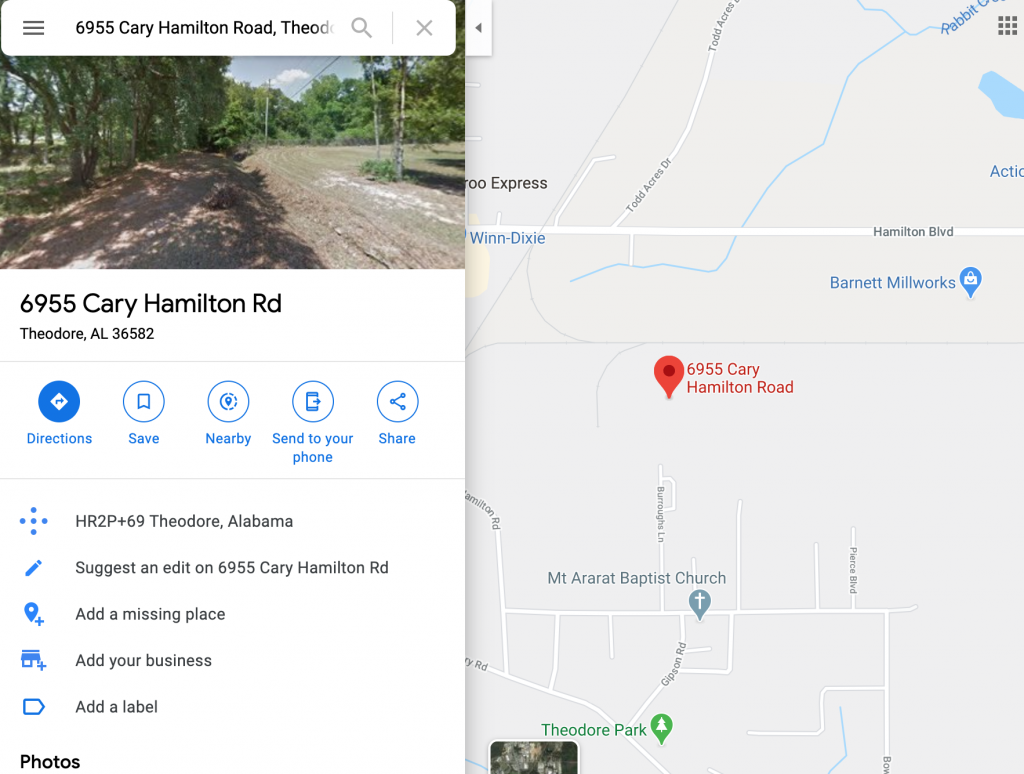Last year, Amazon launched its freight brokerage services in its move to gain market share. Instead of pulling their own loads from their warehouses to fulfillment centers, Amazon would use their trailers and wide pool of independent truck drivers to ship loads for third parties. So what looks like an Amazon load on the highway, may not actually be an Amazon load at all.
My one and only experience with their 3rd party freight brokerage service has been sadly disappointing (I’ve pulled over 25 Amazon loads). Yesterday I had contacted both Amazon and the receiver to get more information about the load. I wanted to know what the commodity was and the weight of the load. Neither were able to help me. Why – it was a 3rd party load.
I started the day (Friday) like any other picking up a trailer from their distribution center in Theodore Alabama and heading out to the address provided on their app. I had no idea where they were taking me. Relay provided no information other than the address and pickup time.

The address listed on the Relay app is incorrect. When I punched up the address on their Navigation system, it took me to a dead end street. I double checked it on Google Maps on my iPhone which took me to a high school on a dead end street. I found out later where I really needed to go is Retif Oil & Fuel which also has the same address.

I called Amazon and was transferred from one person to another – no one seemed to know anything.
Because GPS took me to an elementary school on a dead end road, I had to backup on Burroughs Lane blocking up traffic then finding a way to deftly turn around.
Dazzled and confused with customer service not been of much help, I had no choice but to return to the warehouse and drop off the trailer. Finally Relay called me back and gave me the shipper’s phone number.
The shipper admitted that the address was wrong and the GPS wouldn’t work. Then why would Amazon send me to the middle of dead end street with no one to talk to.
When the shipper informed me that the weight was 44,000 pounds, I quickly denied the load. Some trucks cannot carry this heavy of a load a long distance (850 miles) through higher elevation to Richmond, VA.
A typical Amazon load is about 10,000 lbs or less and is picked up from a warehouse or distribution center. Amazon needs to inform drivers if the loads will be heavy. Some trucks are single axle and are limited to 20,000 lbs on the drive axle. Some trucks have emissions or other issues that reduces their power on heavy loads over steep hills. Some drivers may not have the experience driving heavy loads over these same hills.
Without a doubt, Amazon needs to provide the right address. If the address is wrong on Google, then provide the exact coordinates of the shipper and the business name of the shipper, too. And finally if it’s a 3rd party, the name and phone number for directions and coordination. For a high-tech company known for its talent and ingenuity, they’re not doing much sharing and collaboration with their drivers.
Note, I did my homework on this load. I did call the receiver in Desputanta, VA and informed him that I was delivering an Amazon load on Monday. Neither the receiver or Amazon Relay was able to provide any more information. Wish I had known this was a 3rd party load – I would have never accepted it.
According to Overdrive, Amazon has just completed its pilot program in five Northeastern states and has taken it’s freight services nationwide.
“They want to own that market,” says says Carson Kreig, co-founder of Convey. “to gather up capacity so they can dictate middle-mile rates.”
The problem is that shippers who sign up with Amazon Freight may not realize that the truck driver that is dispatched is not an Amazon employee. Also the Amazon driver who is assigned the load may not realize that this is a 3rd party load.

i cant believe amazon is getting into 3rd party. they should stick to their own warehouses and stay out of other brokers business
Cant believe Amazon would send you to pickup a load at a wrong address. Also every load I’ve done, the broker lists the weight of the load. This is critical especially if the weight is over 40K
Most of Amazon work is DC to DC – everything has to be on time. There’s often little wiggle room to take a break or even get fuel. And on Amazon’s side there’s lots of cancellations, many when the driver arrives at the DC.